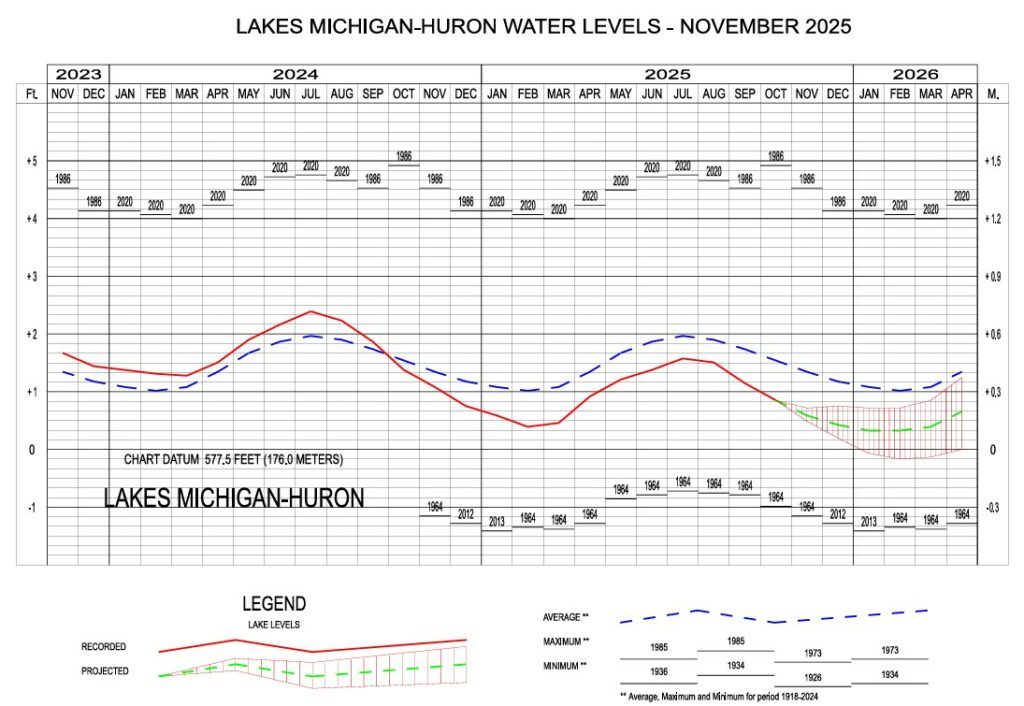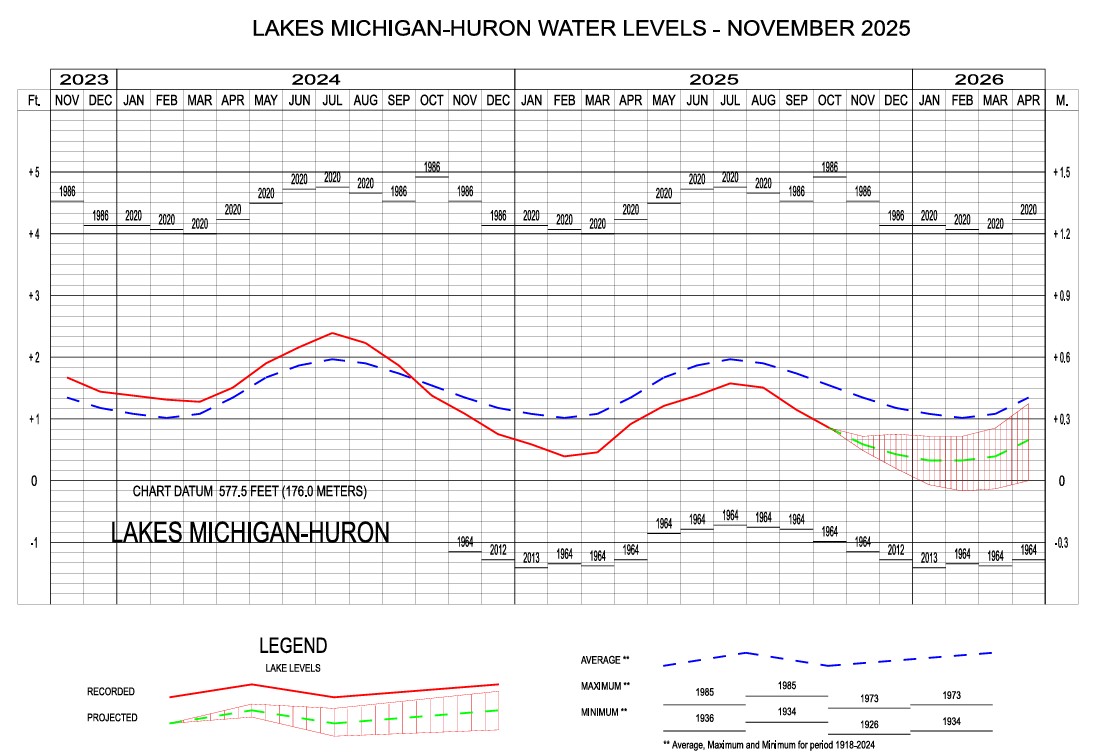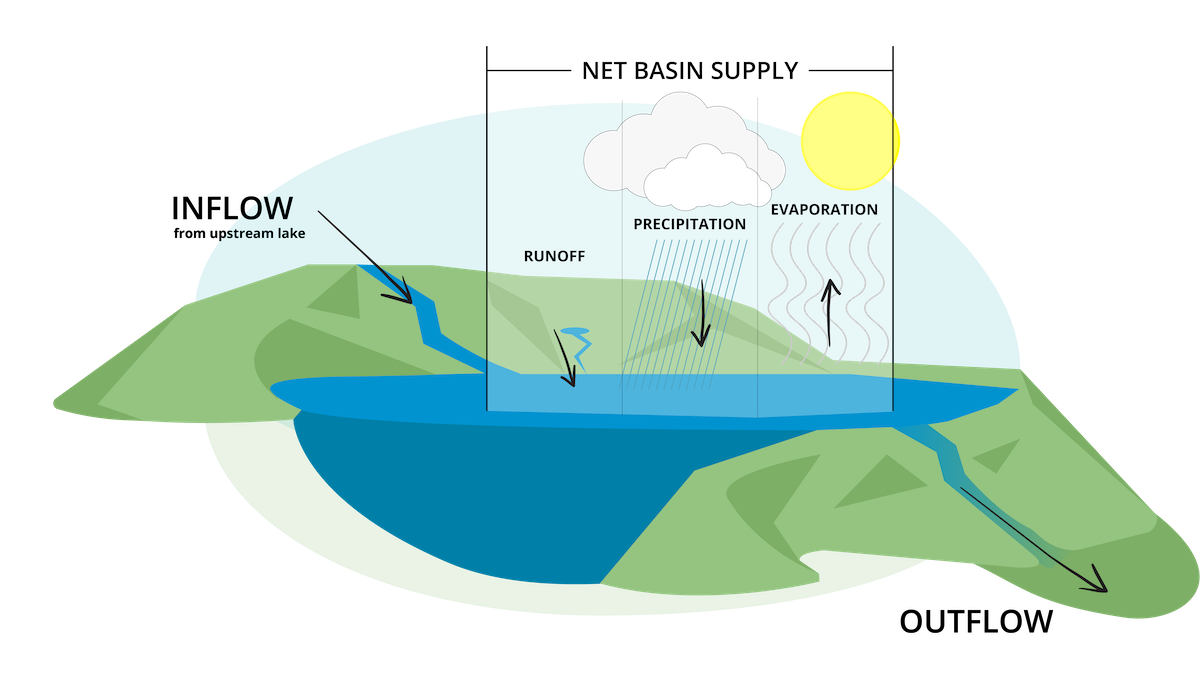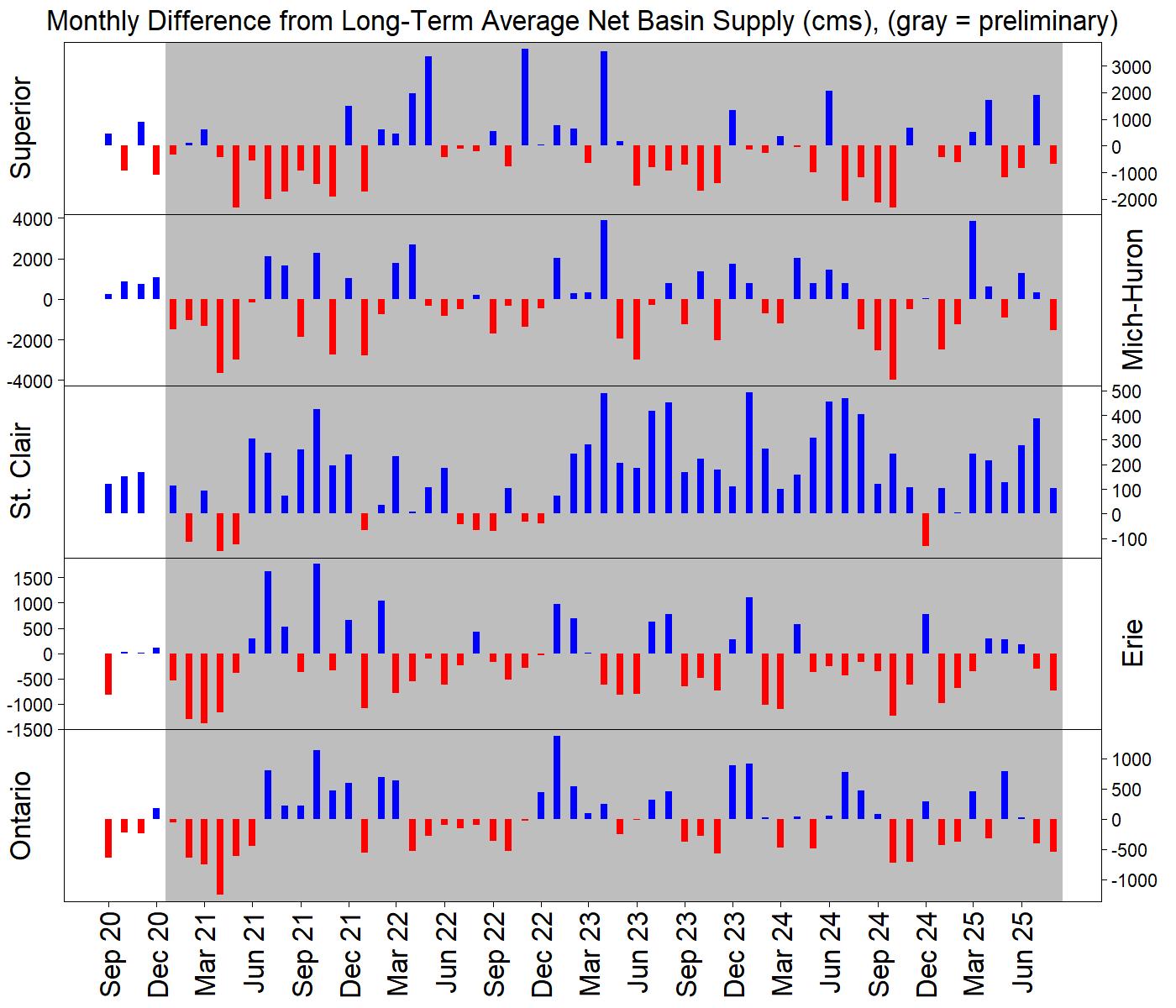
Lake Michigan water levels continue their seasonal decline, decreasing 6 inches from October to November. Lake Michigan is still about 8 inches below the long-term average water level for the month. Water levels are expected to continue their decline through February before increasing in the spring.
Water Levels on Lake Michigan-Huron
Here are 5 things to know about water levels on Lake Michigan for November 2025.
What are the current water levels on Lake Michigan?
The water level of Lake Michigan as of November 21, 2025 was at an elevation of 577.79 feet above sea level (from the International Great Lakes Datum). To put this level into perspective, here are some statistics for Lake Michigan relative to the period of water level records measured from 1918 to present (statistics from USACE’s Weekly Water Level Update).
| Compared to… | Current Water Levels are… |
| One month ago | 6 inches lower |
| One year ago | 8 inches lower |
| Long-term November monthly average (1918 to present) | 12 inches lower |
| Record November monthly mean (set in 1986) | 50 inches lower |
What is the outlook for future water levels?
Lake Michigan continued its seasonal decline from September to October. The USACE 6-month forecast of Great Lakes Water levels forecasts that Lake Michigan water levels will continue their decline until February before beginning to rise in March. Water levels are forecasted to stay below the long-term average (see the water level forecast issued for November 2025 below).

USACE six-month water level forecast for Lake Michigan-Huron retrieved for November 2025 from: https://water.usace.army.mil/office/lre/docs/mboglwl/MBOGLWL-mich_hrn.pdf
What are current and predicted climate conditions like?
According to NOAA’s Climate Prediction Center, La Niña conditions have begun and are favored to continue into the Northern Hemisphere winter, with a transition to ENSO-neutral most likely in January-March 2026 (61% chance). Across Wisconsin, there is a higher chance for below normal temperatures in December. Precipitation forecasts for December show a higher chance for above normal precipitation in Wisconsin’s coastal areas (see precipitation outlook map from NOAA Climate.gov below). Check out the NOAA Climate Prediction Center for a full U.S. climate outlook.

The U.S. precipitation outlook for November 2025. Map by NOAA Climate.gov, based on data from the Climate Prediction Center. From: https://www.cpc.ncep.noaa.gov/
What is behind Great Lakes water level fluctuations?
The story of Great Lakes water level changes is told by Net Basin Supply. Net Basin Supply (NBS) accounts for the water going into a lake in the form of precipitation and runoff minus water leaving a lake due to evaporation of water from the lake surface.

NBS represents the net influence of precipitation over the lake, runoff from a lake’s watershed into the lake, and evaporation from the lake’s surface. Image credit: National Oceanic and Atmospheric Administration
In general, when Net Basin Supply is positive, more water enters the lake than leaves, causing a rise in lake levels. When Net Basin Supply is negative, more water leaves the lake than enters, causing a drop in lake levels.
The annual peak Net Basin Supply occurs when runoff peaks in the spring and experiences its minimum when over-lake evaporation peaks in the winter. These maximums and minimums in Net Basin Supply correspond to the seasonal water level rise and fall.
Evaporation takes place when the Lake’s surface water temperature is warmer than the air temperature. Evaporation increases in the fall and winter as the difference between air temperature and water temperature increases. In October, Lake Michigan water supplies were well below average and water outflows were on par with the average.
What is making water levels go down?
Since monthly record highs in 2020, the Great Lakes water levels have been trending downwards. This trend has continued and water levels are lower than they were at the same time in 2024. In October 2024, Lake Michigan’s monthly mean water level dropped below average for the first time in 10 years and has remained below average since. Water levels are expected to remain below average for the next six months. The graph below visualizes the monthly difference from the long-term average NBS for the past five years. Red bars represent below average NBS, whereas blue bars represent above average NBS.

Evaporation relative to long term average Evaporation for the past 5 years. Retrieved from: https://water.usace.army.mil/office/lre/basinconditions/basinConditions
Water level fluctuation is a process that occurs annually due to changes in net basin supply. For Lake Michigan, October had below average net basin supply, contributing to the seasonal fall water level decrease.
More Resources & Relevant Information:
- In this Adapting to A Changing Coast PBS Special, Dr. Adam Bechle explains how fluctuations in rainfall, runoff, and evaporation cause the Great Lakes’ water levels and coastlines to vary.
- NOAA’s Climate.gov site hosts climate data and information to help you understand climate processes and make decisions on how to manage climate-related risks and opportunities.
- U.S. Climate outlook for November 2025
- Great Lakes Chapter of the Climate Resilience Toolkit
- Our Coastal Hazards page for details about the impacts of high water levels, including erosion, flooding, and navigation issues.
- Our Policy, Planning, and Risk Reduction Strategies page has tools and resources to help local governments identify local resilience opportunities.




